A selection of photos from the First World war.
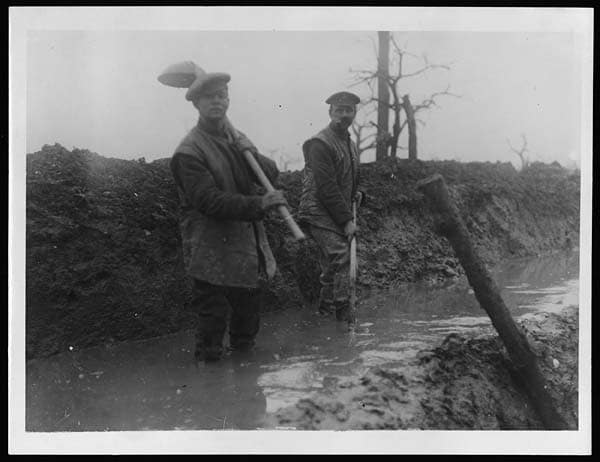
British soldiers on the Somme trying in vain to clear away the mud. Mud was one of the great obstacles in trench warfare and soldiers were often struggling to keep trenches drained. Many soldiers were invalided from the trenches due to ‘trench foot’
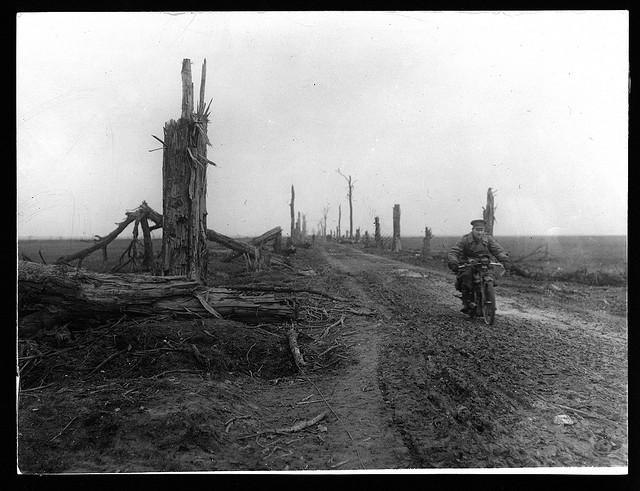
A motorcyclist travels through the bombed out ruins of Amiens. This photo epitomises the devastation wrought by heavy artillery.
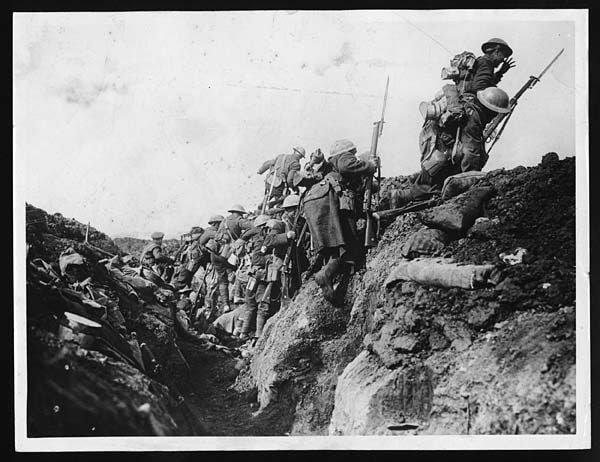
Canadians going over the top in the Somme. (This photo is probably staged away from the front line. But, going over the top was a reality that many soldiers had to face at some time. On the first day of the battle of the Somme, the British lost nearly 20,000 men and 70,000 injured as they unsuccessfully tried to storm German lines.)
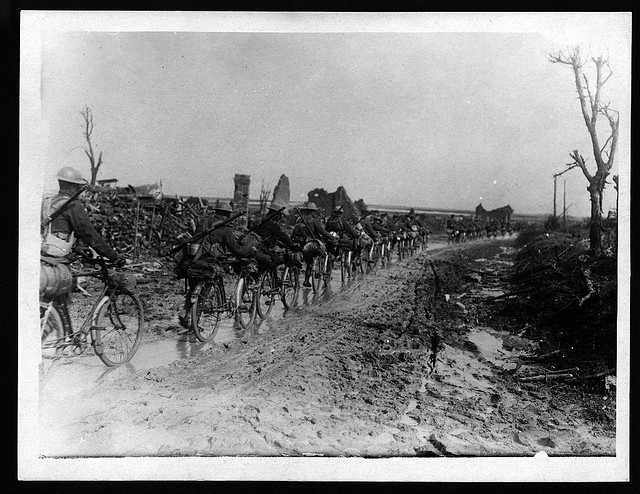
Cyclists suffering through the mud. Soldiers sometimes used bicycles for quick transport, though in this picture, the road looks unsuitable for cycling.
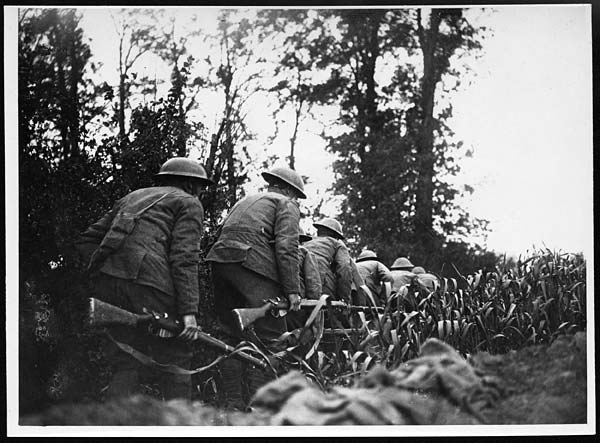
Soldiers on day patrol.
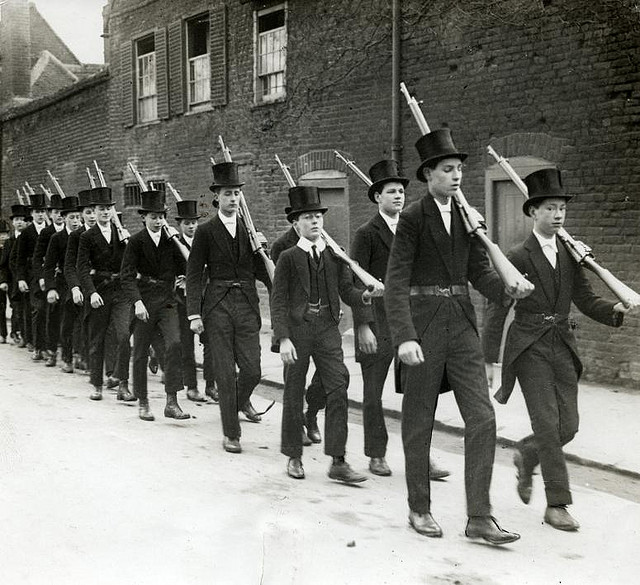
Eton College recruits drilling in the Eton dress and real rifles. Students from public schools suffered a higher fatality rate during the war because the officer mortality rate tended to be much higher than soldiers.
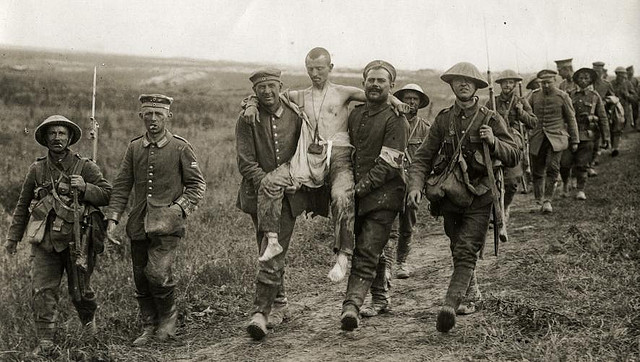
Wounded soldier being carried.
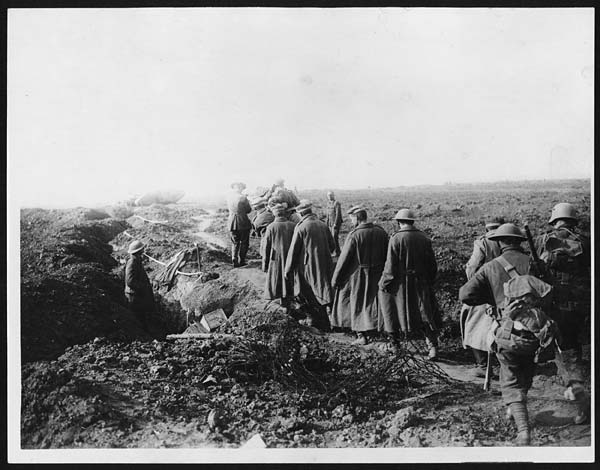
Soldiers in long coats trudge past a desolate scene.
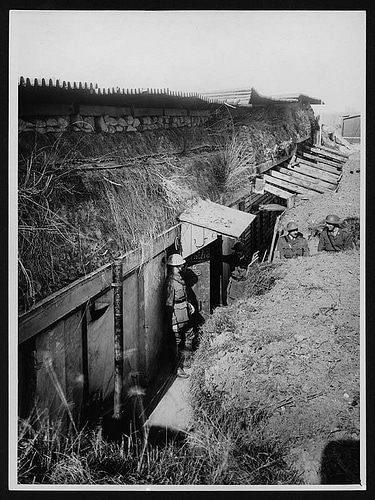
German trenches were much better built than the British. The Germans built bunkers deep underground with many layers of concrete above. When British soldiers overran German trenches they were shocked at the different standards between the two trenches.
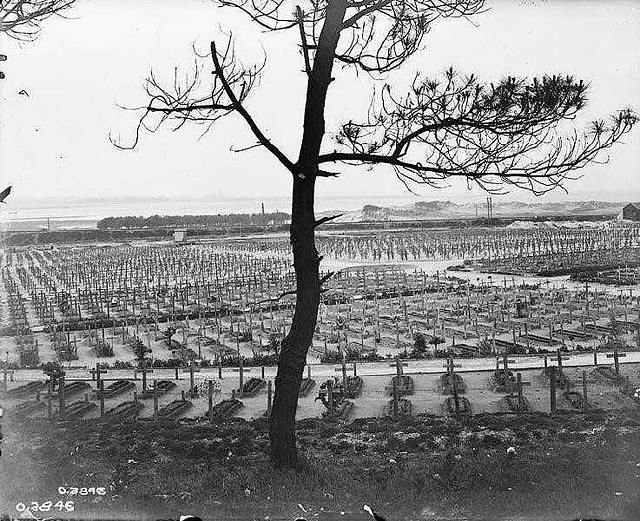
War graves stand testimony to the scale of the slaughter in the First World War.
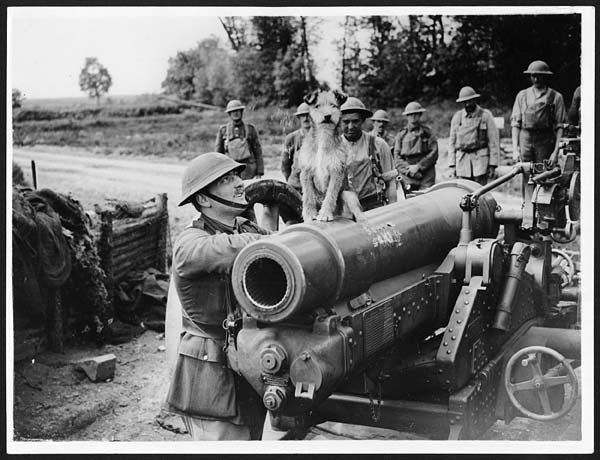
A medium sized artillery piece.
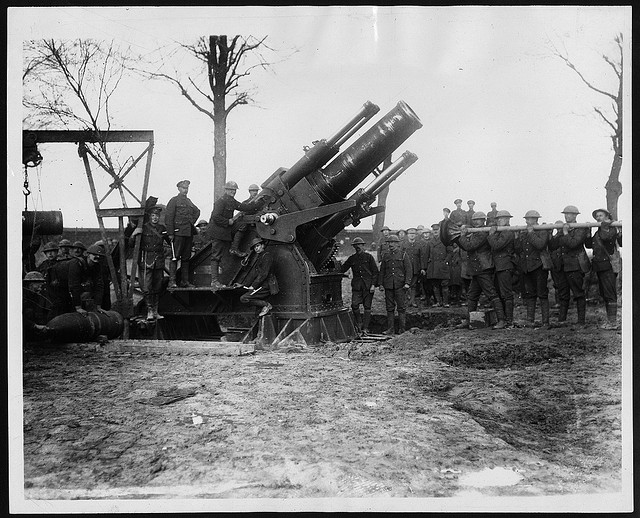
A Howitzer
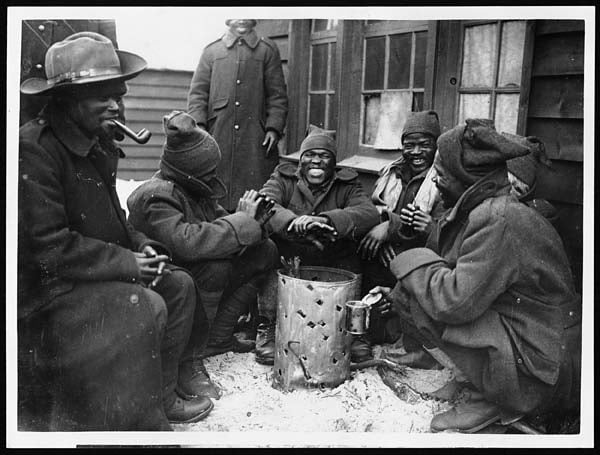
Labour corps. Black South Africans were used as labour – for building railways/ infrastructure behind the front line. Due to the racial discrimination they were not allowed to fight, the South African government fearing that if they fought they would have a greater claim to property rights back home.
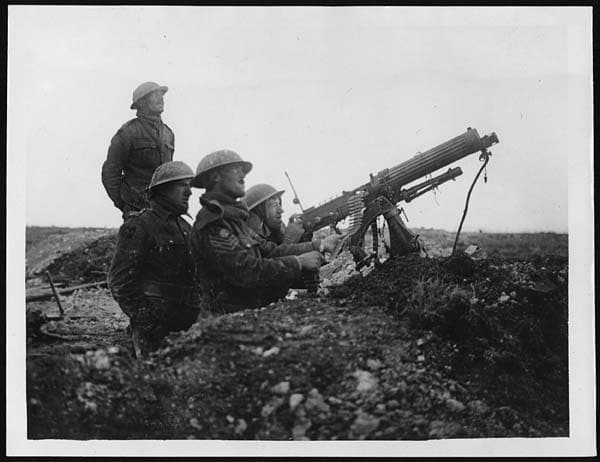
A Machine gun firing at aircraft.
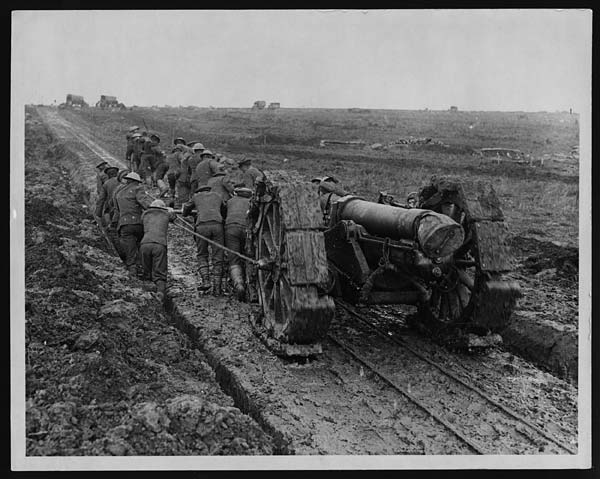
Pulling artillery by hand through the mud.
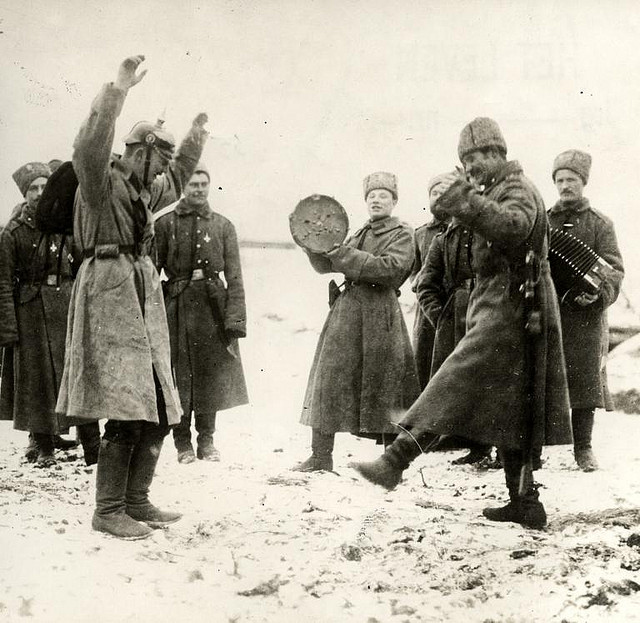
German prisoners of war being shown how to dance by Russian soldiers. (1915)
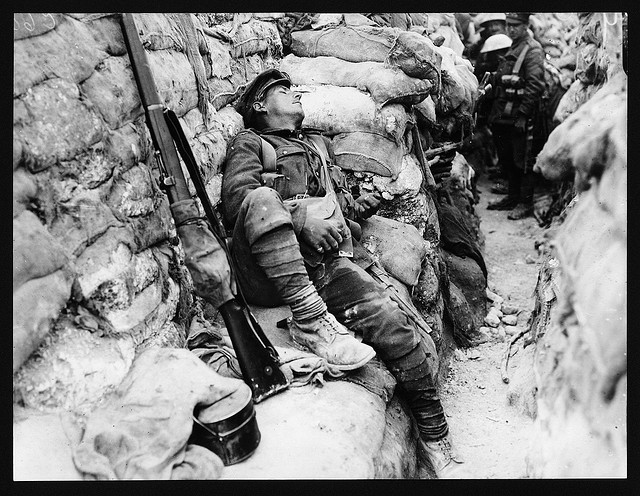
Soldier sleeping. One feature of the First World War was that soldiers faced many hours of boredom when nothing much happened. Regular sleeping patterns were hard to keep during trench warfare, here a soldier catches a nap.
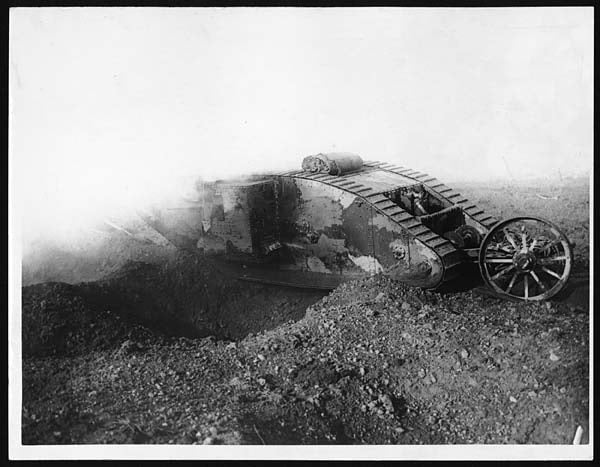
Tank mark 1. This is one of earliest tanks, which was used to limited effect. 50 tanks were used in the Battle of the Somme, although they gave a strong element of surprise, many broke down and unsupported by infantry they were unable to capitalise on initial breakthroughs.
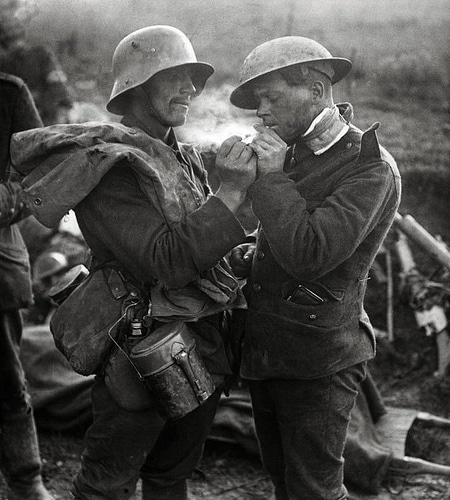
A German soldier lights the cigarette of a British soldier taken as a prisoner of war.
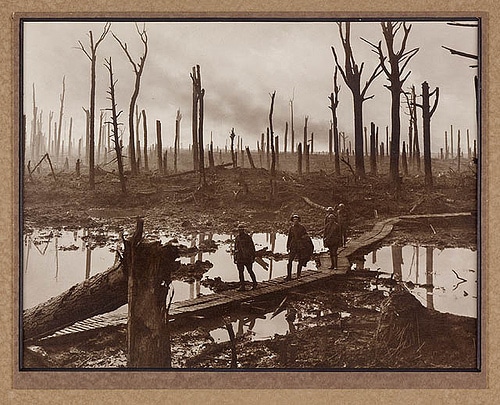
A typical scene of devastation.
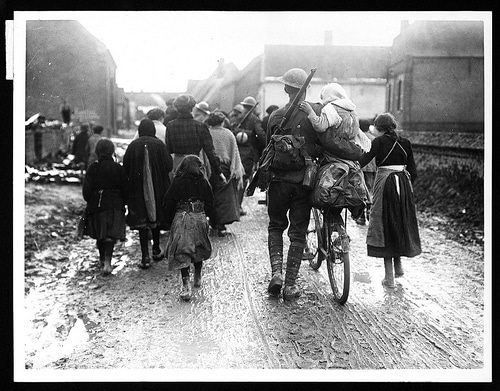
British soldiers with fleeing civilians.
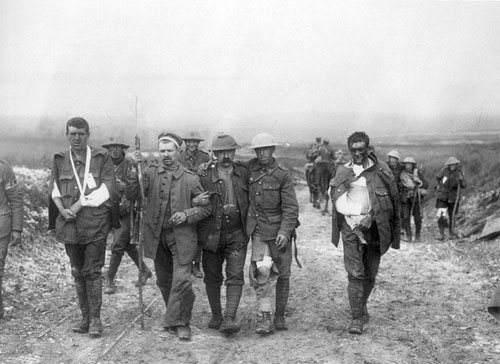
The wounded

Tank
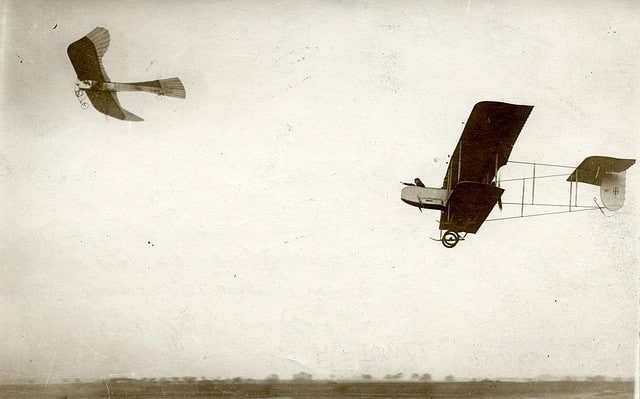
Dogfight. The mortality rates for pilots was very high in this new technology. Aeroplanes had only been invented in 1901.
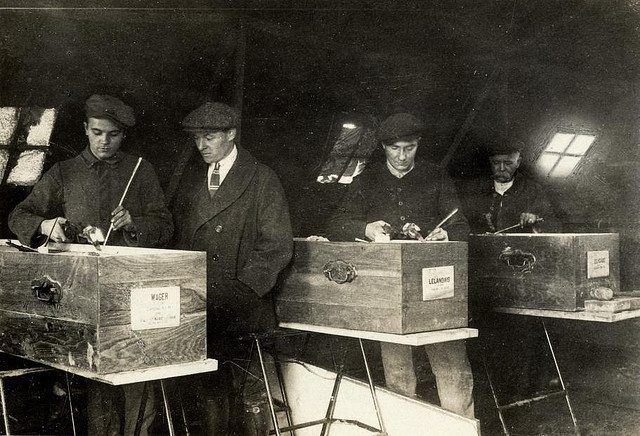
Coffins. The mortality rate of the First World War was exceptionally high.
The total number of military and civilian casualties in World War I was over 37 million. There were over 16 million deaths and 20 million wounded.
The total number of deaths includes about 10 million military personnel and about 7 million civilians.
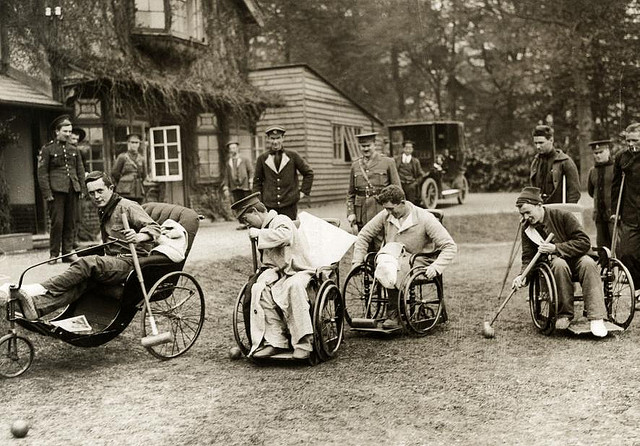
Many of the injured were severely disabled as a result of their injuries.
Related
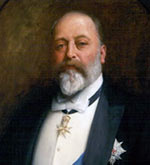
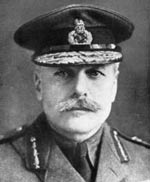
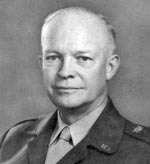
- Heroes of First World War
- Tragedy of the First World War
- Events that changed the world
- Positive aspects of the First World war
- Photos that changed the world
Sources of photos
- National Library of Scotland – Official British photos of World War One.
- National aalarchief – Flickr collection
